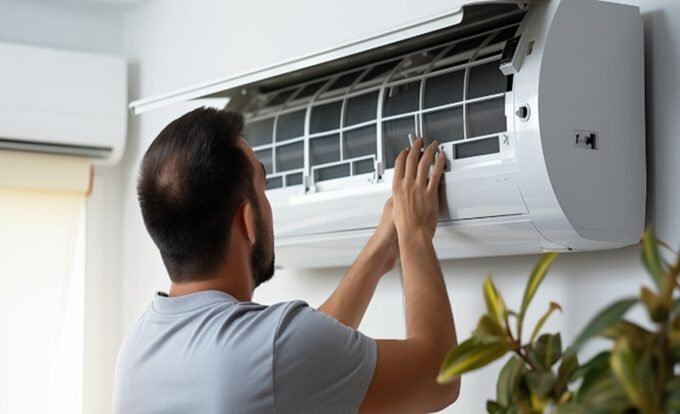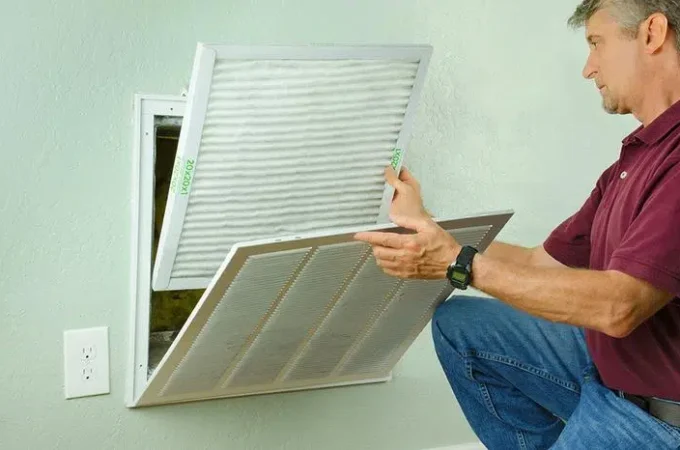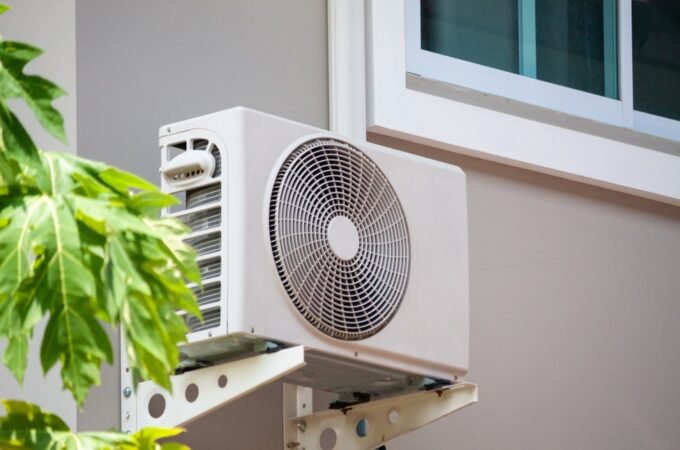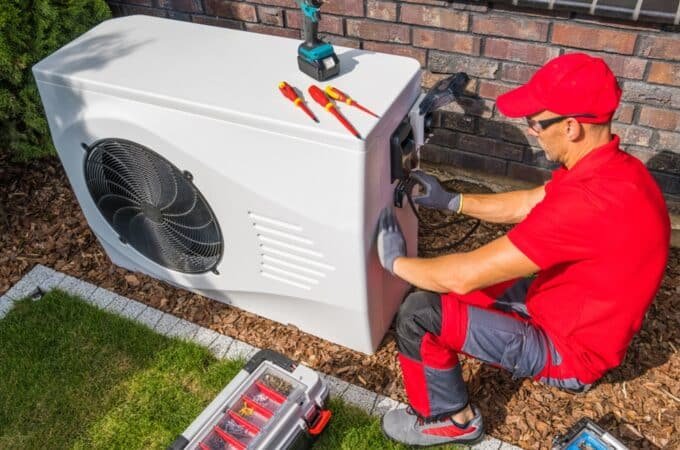
Budgeting for Your HVAC Upgrade with Financing in Mind
Upgrading HVAC systems is more than a technical endeavor – it’s an investment in daily comfort. As you navigate through the decisions of upgrades, repairs, and financing, you’re not merely tinkering with machines; you’re crafting comfort.
Keep reading to learn strategies that lead to cozy winters, cool summers, and manageable bills. With insights on assessing HVAC repairs, budgeting for upgrades, exploring financing options, and keeping up with maintenance, this guide is here to navigate you through each step.
So, let’s delve deeper and take strides toward making your home a haven of comfort, one smart HVAC decision at a time.
Table of Contents
ToggleAssess Your Current Situation
The first step towards upgrading your HVAC system is assessing the situation thoroughly. Begin by understanding the costs involved. Installing a new HVAC system with ductwork can cost between $6,700 to $12,100, while just replacing the existing system might cost you around $4,700 to $9,200.
Next, it’s wise to have a professional inspect your HVAC system. A comprehensive inspection, costing on average between $150 to $500, will evaluate your heating, cooling, and ductwork systems, identifying any necessary repairs or upgrades.
Awareness of these typical problems and their solutions can steer you toward a more informed decision regarding upgrades or repairs
- Clogged Air Filter: A clogged air filter can drastically decrease your system’s efficiency. Regularly check and replace your air filter every one to three months, depending on your system’s requirements and usage.
- Ductwork Leaks and Blockages: Leaks or blockages in the ductwork can lead to increased energy bills and uneven temperatures. Hire a professional to inspect your ductwork for visible leaks, gaps, or blockages, and consider sealing or repairing as necessary.
- Water Leaks: Commonly caused by clogged drain lines, leading to overflow issues. Get a pro to check the drain lines and pan for clogs and clean them out.
- Incorrect Thermostat Settings: Incorrect settings can prevent the HVAC system from turning on or operating efficiently. Ensure the thermostat is set to the desired temperature and the correct operating mode (cooling or heating). Also, check and replace the batteries in the thermostat if necessary.
Set a Budget
After the professional assessment, you should set a budget for the necessary repairs or upgrades. Here’s a structured approach to navigate this phase
- Identify Necessary Upgrades: Necessary upgrades often encompass replacing aging or malfunctioning components, which is required for restoring the HVAC system’s efficiency and reducing recurrent repair costs.
- Secure Quotes: To obtain quotes, start by searching for local HVAC contractors through online directories, local business listings, or referrals from friends and family. Request detailed quotes from at least three to four contractors, ensuring the quotes outline the cost of materials, labor, and project timelines.
- Evaluate Financing Options: Explore financing options offered by HVAC contractors or consider securing a loan if the upfront cost is outside your current budget. Additionally, set aside a contingency fund of about 10% to 20% above the estimated cost to cater for unforeseen expenses.
- Explore Financial Incentives: Incentives from the government or manufacturers can offset the upfront costs of HVAC upgrades, making them more affordable. Many HVAC manufacturers offer rebates on specific models during promotional periods, which can lead to significant savings. For instance, some rebates can save homeowners up to $1,575 on qualifying products. The federal government provides tax credits for high-efficiency HVAC equipment, allowing homeowners to claim up to 30% off equipment and installation costs, with the amount varying based on the efficiency tier of the product. Finally, local utilities often have rebate programs for energy-efficient upgrades, where homeowners can receive hundreds of dollars for each qualifying improvement. The savings here not only come from the rebate but also from the reduced energy bills over time.
Explore Financing Options for HVAC Upgrades
For homeowners eyeing necessary HVAC upgrades or repairs without immediate funds, don’t worry; there are several financing options available. Here are some funding alternatives that can make your HVAC project affordable:
Your Existing Home Insurance Policy
Home insurance coverage can potentially alleviate the financial burden of HVAC repairs or upgrades, depending on the specifics of your policy and the circumstances leading to the HVAC issue.
In scenarios where a covered peril, such as a fire or severe hailstorm, damages your HVAC system, your home insurance policy may step in to cover the repair or replacement costs. However, the extent of coverage is defined by your policy’s limits and the deductible you’ll need to cover upfront. For instance, with a $1,000 deductible, if your HVAC system requires a $7,500 replacement, your insurance may cover $6,500 of that cost.
It’s important to note the exclusions in coverage. Typical exclusions include damage due to normal wear and tear, lack of maintenance, or the aging process of the HVAC system, which are usually not covered by insurance.
Built-in HVAC units are generally seen as part of the home’s structure and may be covered under the dwelling coverage of your insurance policy. This means that if a covered peril damages your built-in HVAC system, the repair or replacement costs could be covered by your insurance, subject to the terms of your policy.
On the other hand, portable or window-based units might fall under a different category – personal property coverage. Unlike built-in units, portable or window-based HVAC units are not considered structural components of your home. Therefore, the personal property coverage section of your insurance policy might be the avenue for claiming repair or replacement costs should these units get damaged by covered perils.
Be sure to fully understand the terms and coverage scope of your insurance policy when considering it as a financing option for HVAC repairs or upgrades. Be sure to contact your insurance provider if you need more clarification on coverage limits and exclusions.
Home Equity Loan or Home Equity Line of Credit
If you’re faced with necessary HVAC repairs or upgrades, your home itself could be the key to unlocking the necessary funds. The secret lies in the equity you have built up in your home, which is the difference between your home’s current market value and the amount you still owe on your mortgage.
It represents the portion of your home you truly own, and you can leverage this to secure funds through either a Home Equity Loan (HEL) or a Home Equity Line of Credit (HELOC).
A home equity loan is like a conventional loan but is secured against your home’s equity. If approved, you receive a lump sum upfront, ideal for HVAC projects with a clear cost outline, such as a complete system replacement or significant upgrades like transitioning to a high-efficiency or geothermal system.
Lenders typically allow homeowners to borrow between 80% to 85% of the equity in their home, making a substantial sum available for major HVAC projects. The interest rates for home equity loans usually range between 3.5% and 5.5%, with terms that can extend for up to 30 years.
This long-term repayment schedule, coupled with a fixed interest rate, brings a level of predictability to your financial planning, making it easier to budget the repayments alongside other household expenses.
On the flip side, a HELOC provides a more flexible approach. Instead of a lump sum, you get a credit limit that you can draw from as needed, much like a credit card. This is particularly useful for ongoing HVAC maintenance or phased upgrades, where costs might ebb and flow over time.
You may want to use a HELOC for replacing parts over time, undertaking energy efficiency upgrades, or addressing unexpected HVAC repairs as they arise. The borrowing limit for a HELOC also hinges on the equity in your home, similar to a home equity loan.
However, the interest rates are variable, starting at around 5.25%, allowing for some flexibility based on market conditions. The terms for a HELOC extend up to a few years, providing a shorter repayment time frame compared to a home equity loan.
Both financing options require you to have a good chunk of equity in your home, usually around 15% to 20%, although the specifics can vary from lender to lender.
HVAC Contractor Financing
Stepping into an HVAC upgrade or repair project can be eased with contractor financing. This is where your contractor not only handles the technical side of your HVAC needs but also assists in financing the project. It’s a route that can be simpler than traditional bank loans.
Here’s how it works: HVAC contractor financing allows you to secure funding directly from the contractor handling your project. Although not all contractors provide this service, those who do make the financial aspect more straightforward.
HVAC contractors may have different financing solutions up their sleeves. These can range from installment loans and lines of credit to personalized payment plans tailored to your financial situation. It’s about finding what fits your budget and your HVAC project requirements.
Typically, contractor financing can cover loan amounts between $1,000 to $500,000, with terms from two to 12 years and interest rates starting as low as 4%. These terms can provide a competitive edge compared to some other financing options.
Now, some contractors go the extra mile by partnering with third-party financing providers. This partnership can broaden the loan options available, catering to various credit scores and increasing the chances of finding a suitable financial solution for your HVAC project.
Personal Loans
Personal loans present another financing option for homeowners looking to tackle HVAC repairs or upgrades. These unsecured loans offer a faster way to obtain the necessary funds without requiring any collateral. If approved, a lump sum is deposited directly into your bank account.
Average amounts for personal loans typically range between $1,000 to $100,000, making them adaptable to a variety of HVAC projects, from minor repairs to major system upgrades. Interest rates on personal loans also vary widely, often falling between 2.49% and 35.99%, although some HVAC-specific financing programs might offer rates starting at 8.99%. The rate you receive will largely depend on your credit score and financial history.
Loan terms can span a wide range, with some extending up to 15 years, but more commonly, you’ll find terms between two to 12 years. While longer terms can result in lower monthly payments, they may lead to higher overall interest costs.
The funds from a personal loan can be used for various HVAC needs, including:
- Purchasing new HVAC equipment
- Covering installation costs
- Transitioning to a high-efficiency or geothermal system
- Addressing urgent repairs or replacements to ensure your home remains comfortable
Personal loans also stand out for their speed of funding. Many lenders are able to disburse the funds within one or two days post-approval, making personal loans a timely solution for urgent HVAC projects.
Be sure to shop around and compare loan offers from different lenders to secure favorable terms, such as low-interest rates, no or low fees, and a repayment schedule that fits your budget.
Energy-Efficiency Loans
When it comes to optimizing your home’s energy usage, especially through HVAC system upgrades or repairs, energy-efficient loans emerge as a compelling financing option. These loans are tailored to fund energy-saving projects, making it easier for homeowners to invest in HVAC systems that not only enhance comfort but also lead to significant energy savings over time.
The loan amounts, interest rates, and terms can vary widely. Some programs offer financing up to $50,000, while others might have a lower cap. Interest rates are diverse, too, with some programs offering zero or low-interest rates.
The loan terms can stretch from five to 20 years, providing repayment flexibility and helping to spread out the costs over time, easing the monthly financial burden.
These loans can cover a variety of HVAC-related upgrades and repairs to enhance energy efficiency. This includes:
- Repairing or replacing heating, cooling, and water heating units
- Transitioning to high-efficiency or geothermal HVAC systems
- Undertaking weatherization projects like insulation, air sealing, and ventilation, which work in tandem with your HVAC system to boost overall energy efficiency
To qualify for energy-efficient loans, a home energy audit is usually necessary. This audit evaluates the cost-effectiveness and energy-saving potential of the proposed upgrades, ensuring the financed improvements will lead to energy savings.
Maintain Your HVAC System
Regular maintenance of your HVAC system is a prudent practice that ensures it operates efficiently, performs at its best, and lasts longer. This not only enhances your home’s comfort but also leads to substantial cost savings in the long run as it minimizes repair costs and lowers energy bills.
Here’s how you can keep your HVAC system in top-notch condition
- Schedule professional inspections: Have a certified HVAC technician inspect your system at least once a year, ideally before the heating or cooling seasons commence. They can catch issues before they escalate into costly repairs or replacements.
- DIY Inspections: In between professional inspections, you can do your own checks. Look for any unusual noises, check for loose parts, and ensure the system starts, operates, and shuts off properly.
- Regular cleaning of filters: Clean or replace your filters every one to three months, depending on the manufacturer’s recommendations and the type of filter your system uses.
- Upgrade to high-efficiency filters: Consider upgrading to high-efficiency filters, which can trap more particles and improve air quality while maintaining system efficiency.
- Clear the area around outdoor units: Keep the area around outdoor units clear of leaves, twigs, and other debris. Ensure there’s at least a two-foot clearance around the unit for proper airflow.
- Ensure indoor units are free of obstructions: Similarly, ensure indoor units are free of obstructions and the surrounding area is clean.
- Check for leaks in ductwork: Over time, the ductwork can develop leaks that waste energy and reduce your system’s efficiency. Have a professional check for and seal any leaks in the ductwork.
- Install a programmable thermostat: Installing a programmable thermostat can help ensure your HVAC only operates when needed, thus saving energy.
- Consider energy-efficient HVAC systems: If your system is old and inefficient, consider upgrading to an energy-efficient HVAC system, which could significantly reduce your energy bills.
There are also certain things to avoid in your HVAC maintenance routine to ensure the system remains in good working condition:
- Don’t ignore unusual noises or smells from your HVAC system
- Don’t skip annual professional maintenance check-ups
- Don’t try to conduct complex maintenance tasks or repairs yourself if you’re not qualified, as this could void warranties or cause further damage
Final Recommendations
Embarking on HVAC upgrades and repairs is a step towards a more comfortable home. Understanding your current system, budgeting wisely, and exploring different financing options are key to managing costs while ensuring your home stays cozy year-round.
Keeping up with regular maintenance will further enhance your comfort and extend the lifespan of your HVAC system. So, as you take steps toward your HVAC project, remember that informed choices today will lead to a comfortable and cost-efficient home tomorrow.






